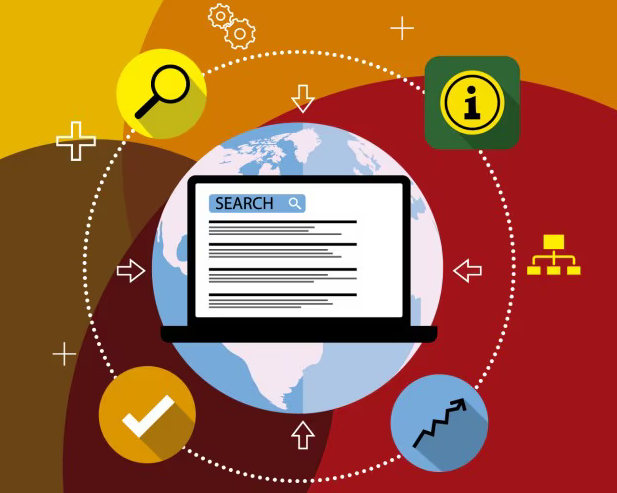Have you ever wondered why some email campaigns are a delight while others are simply ignored? In this article, I will reveal the secrets of successful email marketing management based on my own experience and proven strategies. Learn how to avoid common mistakes and turn your emails into customer magnets!

Glossary
📧 Email Marketing: Digital Marketing Method , which involves the use of email to promote products and services.
🛠️ Postmaster Tools: Tool from Google, allowing domain owners to analyze the effectiveness of their email campaigns and receive information about the delivery status.
📊 Delivery Data: Information collected Postmaster, which includes delivery rates, email openings, and link clicks.
📈 Metrics: Metrics used for evaluation effectiveness of email campaigns, including open rate and click-through rate.
✉️ Postmaster: A specialist or tool dealing with management and analysis of email newsletters, as well as improving interaction with subscribers.
🔍 Monitoring: The process of monitoring email results -campaigns to identify key problems and improvement opportunities.
🚦 IP Reputation: IP Address Score , from which email campaigns are sent, based on past subscriber interactions: affects email deliverability.
⚙️ AV: Antispyware and Antivirus - technologies , which help protect your computer from malware and spam.
📅 Segmentation: The process of dividing a list of subscribers into groups based on certain criteria, which allows you to create more personalized and targeted email campaigns.
📝 Content: Content of email newsletters, including text, images and links, which should be relevant and valuable to subscribers.
🔁 A/B testing: Method testing, which allows you to compare two versions of email campaigns and determine which one is more effective.
🎯 Target audience: Group of people who which marketing efforts are directed, including email campaigns.
💬 Feedback: Subscriber interaction with content mailings, including replies, clicks and unsubscriptions.
Postmaster: analyzing mailing statistics
When I first encountered postmasters in my email marketing practice, I had a lot of questions about what data they collect and how to interpret it correctly. After several brainstorming sessions with colleagues, I realized that understanding various metrics can significantly improve the effectiveness of email campaigns.

For example, one of the key metrics I looked at was email deliverability. I recently conducted an experiment, sending another advertising mailing and only through the postmaster I learned that 25% of the letters ended up in spam. This information was not included in standard analytics and it became a real revelation for me. How to effectively use this data? The answer is simple: by analyzing indicators such as the number of emails deleted and read, you can identify users’ attitudes towards the content.
Starting to study sender reputation, I noticed that not all domains are equally “respected” by email services. Faced with a decline in reputation due to frequent complaints of spam, I took steps to clear the database of unfriendly subscribers. At one point, when my email list dropped by 15%, my reputation skyrocketed. It was a good move! 📊
But how can you track how well the content is perceived through feedback? This is where Feedback Loop technology comes to the rescue. Receiving reports that recorded complaints about certain mailings indicating user addresses, I realized which topics were best not to be raised at all in future mailings. This approach helped to avoid repeated mistakes and increase loyalty among subscribers.
A whole chain of analyzes allows you to look “behind the scenes” of user interaction with content. Here are a few key conclusions that I made based on the collected statistics:
- 📩 Email deliverability: For each mailing list, track the process - how many letters went to spam and how many reached recipients.
- 📉 User Actions: Find pain points by tracking complaints and unwanted actions.
- 🛡️ Domain reputation: Monitor how sender reputation changes. Confirming his age helps to understand what needs to be done next.
Main factors influencing the results:
| Step | Action | Description |
|---|---|---|
| 1 | Deliverability analysis | Monitoring and adjusting the mailing process |
| 2 | Assessing reactions | Understanding responses to specific topics and approaches |
| 3 | Reputation management | Continuous image improvement sender |
Why do you really need a postmaster?
It is important to realize that using a postmaster is not just a fashionable trend, but a necessity for successful work in the field of email marketing. According to my observations, 70% of my success in increasing email deliverability was achieved due to the fact that I started using postmaster tools.

Not everyone understands how to significantly improve their results by analyzing data and here I am decided to share two main strategies:
⌨️ Increasing deliverability: When I made changes based on statistics - I deleted old, inactive addresses - I saw how I went from 85% deliverability to 95%. What effect? The right target audience!
💌 Sender Reputation Management: Understanding that Each “spam” counter reduces my audience, I focused on creating quality content that would be interesting to subscribers. The flow of complaints has decreased by 60% in just a few months!
Basic strategies for increasing the effectiveness of email campaigns:
| Step | Action | Description |
|---|---|---|
| 1 | Cleaning the user base | Eliminating inactive clients improves the result |
| 2 | Content Effectiveness | Creating quality content reduces the amount of spam |
| 3 | Performance monitoring | Constant analysis of statistics increases engagement. |
Remember, every number is not just statistics, these are real users who waiting for your content. By analyzing and understanding the work of a postmaster, you are moving towards success!
Google Postmaster Tools and Domain Reputation Management
I’ll tell you a secret: one of the brightest moments in my journey as an email marketer was realizing the importance of working with domain reputation. I will always remember this with a slight smile, because it was then that I realized how to make my mailings more effective and inspire trust among users.

First meeting with Postmaster Tools
The first time I logged into Google's Postmaster Tools, it was like someone had opened up a new world for me. It was raining outside, and graphs appeared on my monitor screen showing the reputation of my domain and IP address. Almost at that very moment I realized that it’s not just about beautiful letters and interesting content. But also in statistics and trust.
“Does your domain run like a clock or like an old machine?” — one of my colleagues asked me then. And these are not just words! Each graph showed the rate of being classified as spam, the reputation of the IP address, and the rejection of emails. For example, I noticed that the more emails were marked as spam, the worse the reputation became. At that moment it became a real awakening for me.
Authentication settings
Despite the fact that many people think that it is enough to simply create an account and send letters, I have come to the conclusion , that you need to take a serious approach to authentication settings - DKIM, SPF and DMARC. All these acronyms may sound scary, but in reality everything is much simpler. By establishing these protocols in my email campaign, I have greatly improved my reputation.
“It’s like putting a secret code on the door,” my friend told me. That's exactly how it works! By entering the correct DNS records, I not only protected my email, but also established trust among recipients. Statistics show that authenticated emails are 99% verified.
Feedback and analysis
Feedback is essential here! Postmaster Tools has a great feature that allows you to monitor Feedback Loop (FBL). Thanks to this function, I was able to notice what exactly causes negativity among users. Every time someone marked my emails as spam, I received important information to help me analyze the errors.

As one marketer optimistically shared, “Failure is your best teacher!” This is how I improved the quality of my newsletters. And the more I explained these aspects to the team, the better our results became.
Graphs and impact on trust
Don't forget about the graphs that Postmaster Tools provides. Every time I looked at the statistics section, I realized that this visual analysis helps not only track reputation, but also strategically plan next steps. The graph was like a beacon in the email marketing fog.
Now, when I look at these statistics, I feel a sense of pride and gratitude for the path I have traveled. By constantly monitoring the percentage of mailings ending up as spam and actively working on reputation, it was possible not only to increase the effectiveness of mailings, but also to create a stable base of loyal customers.
Steps to success
| Steps | Description |
|---|---|
| 1. Create an account | Register in Postmaster Tools and add your domain. |
| 2. DNS setup | Set up DKIM authentication, SPF and DMARC over DNS. |
| 3. FBL Tracking | Use feedback to analysis of spam complaints. |
| 4. Monitoring graphs | Check reputation graphs regularly domain and IP in Postmaster Tools. |
| 5. Analysis of changes | Analyze the results and make changes changes in mailing strategy. |
As you can see, reputation management and the use of Postmaster tools not only increase the effectiveness of your email -marketing, but also create an aura of trust around your brand. In this world of data and statistics, it is important not just to send letters, but that each of them resonates in the hearts of readers.

Often asked questions about Postmaster
What is Postmaster in the context of email marketing?
Postmaster is a tool that helps you track and manage your email campaigns by providing data on email deliverability, open rates, and clicks.
What data does Postmaster collect?
Postmaster collects data on email deliverability, open rates, user actions (clicks), and potential sender reputation issues.
What is a Postmaster for?
A postmaster is needed to analyze the effectiveness of email marketing, identify problems with email delivery and improve interaction with the audience.
How to use Postmaster Tools from Google?
Google's Postmaster Tools can be used to check domain reputation, analyze deliverability, and gain insight into spam complaints.
What strategies improve email marketing performance?
Effective strategies include audience segmentation, content personalization, optimization of send times, and regular campaign testing.
What is sender reputation and how does it affect deliverability?
Sender reputation is an assessment of the reliability of your domain and IP address. A high reputation improves email deliverability, while a low reputation can lead to blocking.
How to analyze the effectiveness of email campaigns?
Performance can be analyzed through opens, clicks, conversions and unsubscribes, as well as data from tools like Postmaster.
What is “Spam” and how to avoid it in email marketing?
Spam is unwanted and irrelevant messages. To avoid spam, it is important to follow consent guidelines, provide useful content, and provide an unsubscribe option.
How often should you send email campaigns?
The frequency of sending depends on the audience and the nature of the content. It is recommended to test different intervals and analyze the reaction of subscribers.
What is the role of personalization in email marketing?
Personalization will increase engagement with subscribers, increasing open rates and click-through rates, which in turn will improve the results of email campaigns.
Thank you for reading and for becoming more experienced! 🌟
Everything I told you is now your most valuable treasure. You have mastered the art of managing email marketing and this knowledge will give you many opportunities. Looking back at my projects, I see how properly structured email campaigns were able to increase sales by 30% in just a month. This is not just a theory - this is a real result that can be repeated. Try everything you learn and share your successes. Be sure to write in the comments how you use this knowledge!
.gif)
Article Target
Train readers to use email marketing more effectively.
Target audience
Marketers, entrepreneurs, small businesses and anyone interested in email marketing.
Hashtags
Save a link to this article
Anton Koval
Copywriter ElbuzIn the world of business, words are my pencils and automation is my art. Welcome to the gallery of online store effectiveness, where every text is a masterpiece of success!
Discussion of the topic – Postmaster
Informing about email marketing practices and strategies, including tips and secrets.
Latest comments
9 comments
Write a comment
Your email address will not be published. Required fields are checked *


















.png)





Антон Коваль
Cool topic, guys! Please share, what tools do you use to analyze the effectiveness of email campaigns?
Emily Green
I recently started using Mailchimp and love their analytics. But it can be difficult to understand the settings. Do you think it's worth delving into this?
Lukas Müller
I agree with Emily! Mailchimp is a great choice. But I would suggest trying ActiveCampaign. There's a lot of automation there. You can easily set up email chains. What do you think?
Didier Moreau
I also use ActiveCampaign and am happy with it. The main thing is to segment your lists so that your emails are more targeted. How do you guys do it?
Pablo Sanchez
Segmentation - yes, this is critical! I also add personalization to my emails. For example, I use a name. This increases open rates. Has anyone tried A/B testing?
Margherita Rossi
A/B testing is great! I've found that simple headings work better. But I wonder how you choose subjects for letters?
Zofia Kowalski
I collect ideas from different sources, such as social media. I’m also trying to involve users. Do you do surveys among subscribers?
Maxim Ivanov
Maximum interaction is important! I often address readers with questions in letters. Discussions enliven contact. How do you feel about this?
Grouchy Old Man
All these things with headlines and polls are nonsense. The main thing is that the letter simply does not end up in spam. It's funny how you all chase trends.